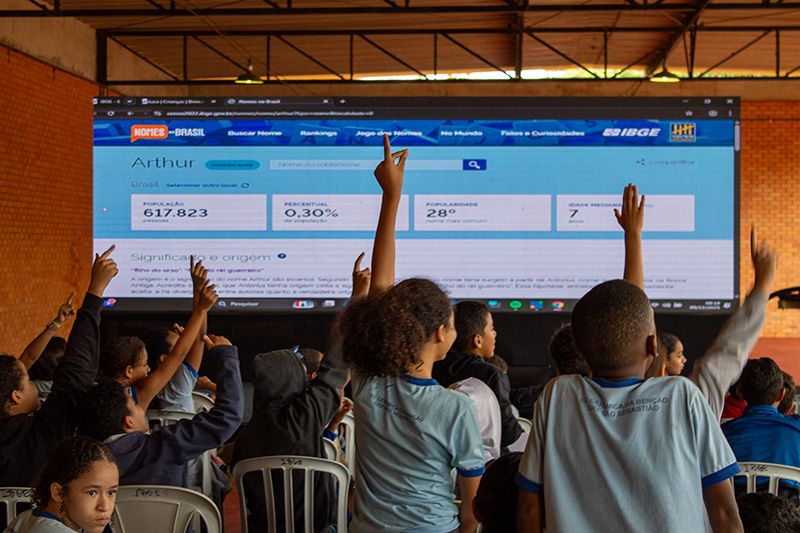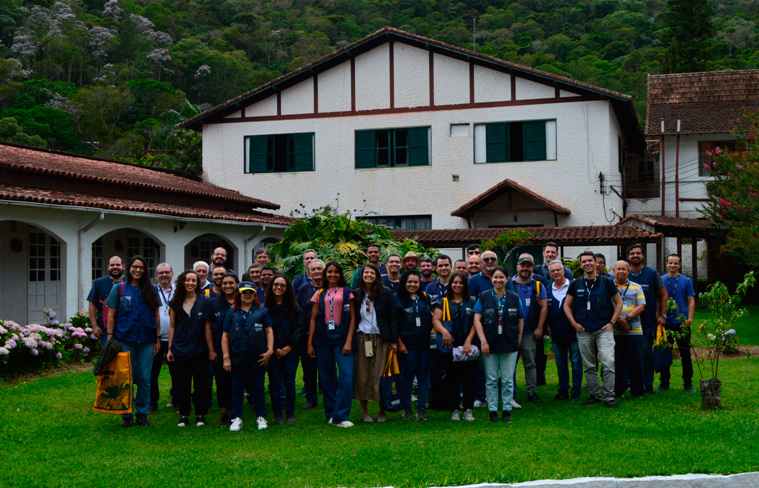Continuous PNAD
Unemployment up in 11 states in Q2, but down in Amapá and Pará
August 28, 2020 09h00 AM | Last Updated: August 28, 2020 08h23 PM

The unemployment rate in the second quarter increased in 11 states and remained stable in 14; only Amapá (-5.8%) and Pará (-1.6%) registered a decrease in comparison with the first quarter of 2020. The highest rates were observed in Bahia (19.9%), Sergipe (19.8%) %), Alagoas (17.8%), Amazonas (16.5%), Rio de Janeiro (16.4%) Roraima (16.3%) and Maranhão (16.0%), while the smallest ones were in Santa Catarina (6.9%), Pará (9.1%), Rio Grande do Sul (9.4%) and Paraná (9.6%).
The greatest increases in unemployment were in Sergipe (4.3 percentage points), Mato Grosso do Sul (3.7 pp), Rondônia (2.3 pp) and Rio de Janeiro (1.9 pp). The data are from the Continuous National Household Sample Survey (Continuous PNAD), released today (28) by the IBGE.
In 12 states, unemployment exceeded the national average of 13.3%. The country had 12.8 million people without work in the second quarter, as already disclosed by the Institute. The unemployment rate increased 1.1 pp compared to the first quarter of 2020 (12.2%), and 1.3 pp compared to the second quarter of 2019 (12.0%).
In relation to the same quarter of 2019, there was an increase in the unemployment rate in 12 states. Sergipe (4.5 p.p.), Rondônia (3.9 p.p.) and Minas Gerais (3.4 p.p.) had the highest increases. Pará also presented a drop in this index, of 2.1 p.p. In the other Federation Units there was stability.
Discourage rate grows and inequalities remain
The number of discouraged was 5.6 million people, an increase of 19.1% in relation to the previous quarter. The largest contingent was in Bahia (849 thousand). The percentage of discouraged people (in relation to the population in the workforce or the discouraged) in the second quarter was 5.6%, an increase of 1.2 pp compared to the first quarter of 2020. Maranhão (21.6%) and Alagoas (20.7%) had the highest percentages and Santa Catarina (1.4%) and the Federal District (1.2%), the lowest.
Gender, racial and age inequalities remain. In the second quarter of 2020, the unemployment rate was 12.0% for men and 14.9% for women, who remain with the largest contingent of people at working age (53.0%). For whites (10.4%) the rate was below the national average, but for blacks (17.8%) and browns (15.4%), it was above it.
The unemployment rate is higher among younger people. The highest unemployment rate occurred among minors (42.8%); and the age groups of 25 to 39 (35.3%) and 18 to 24 years (%) continued with high rates. The lowest rate occurs with the elderly (60 years old and over), with 4.8%.
“The employment-to-population ratio has fallen in all Major Regions. And the record drop in the employment-to-population ratio in the second quarter was sharper among men; people aged 18 to 24 and, by schooling, among those who have completed secondary education. Regarding color and race, people of black and brown color also had very sharp falls throughout Brazil ”, summarizes Adriana Beringuy.
Employment drop is sharper in informal market
The survey also shows that the informality rate reached 36.9% in the second quarter, a decrease of 3 pp in relation to the previous quarter and of 4.3 pp compared to the same period last year. Despite the decrease in all regions, the North (52.5%) and the Northeast (48.3%) are above the national average. The Central-West (35.7%), the Southeast (31.5%) and the South (29.4%) have the lowest rates and below the national average.
The survey analyst explains that the drop in informality is not due to a higher level of formalization of work, but rather to the drop in employment among informal workers.
“There was indeed a drop in informality, because informal workers were more affected by employment loss. The drop in employment was driven by informal workers ”, points out the analyst of the Continuous PNAD.
In the states, the highest rates of informality are in Pará (56.4%), Maranhão (55.6%), Amazonas (55.0%) Piauí (53.6%). While Santa Catarina (25.8%), the Federal District (26%) and São Paulo (28.6%) have the lowest informality rates.
Unemployment in the Northeast reaches 16.1%, the highest rate among the regions
In the quarterly comparison by Major Regions, while the North and Northeast showed stability, the Southeast registered an increase from 12.4% to 13.9%, the South, from 7.5% to 8.9%, and the Central-West from 10.6% to 12.5%. Even so, the Northeast remained with the highest unemployment rate among all regions (16.1%).
The employment-to-population ratio was estimated at 47.9% in the second quarter, down 5.6 pp compared to the previous quarter and 6.7 pp compared to the second quarter of 2019. In comparison with the second quarter of 2019, all Major Regions showed a reduction in this indicator.
In the second quarter, the employed population totaled 83.3 million people, of which 67.0% were employees (including domestic workers), 4.7% were employers, 26.0% were self-employed and 2.2% contributing family workers .
In the North (31.7%) and Northeast (29.6%) regions, the percentage of self-employed workers was higher than that observed in the others.
Among workers in the private sector, 77.7% had a formal contract, although in the North and Northeast, the indicators were 65.1% and 63.8%, respectively. The lowest rates were in Maranhão (48.3%), Piauí (53.9%) and Pará (54.5%) and the highest in Santa Catarina (88.8%), Paraná (82.1%) and São Paulo (81.2%). In the same quarter of 2019, the proportion of workers with a formal contract in the private sector had been 28.4%.
Effects of Covid-19 pandemic in collection
Due to the Covid-19 pandemic, IBGE household sample surveys started recording higher non-respose percentages (unanswered interviews) than usual . Although, to date, there has been no damage to the quality of the key indicators of the Continuous PNAD, within the scope of quarterly disclosure, methodological improvements are necessary. Therefore, some areas of dissemination were removed, at no expense of information quality.
“For this release, the indicators were disaggregated only up to the Federation Units and we removed the sociodemographic disaggregations, such as sex and color or race, as well as income data by category of employment and activities”, explains the coordinator of Labor and Income, Maria Lúcia Vieira.




















